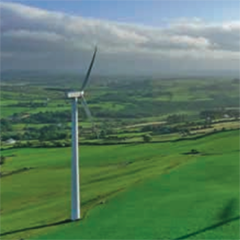WTG Partners ApS has become one of the forerunners in this non-destructive, inspection-based service for the wind industry, and applies its skills to many of the sector’s leading stakeholders. But what’s involved, exactly? We asked the
company’s Christian Holmgaard to talk us through the process.
WTG Partners use both traditional UT and an advanced form of NDT (Non Destructive Testing) called Phased array scanning, which is different to UT in the sense that it utilises a number of phased UT scan heads in one single probe. And with the equipment we use it means that we can see 3D images of the hidden defects inside the material, and when coupled with an encoder, we have a 3D, true-to-scale file for analysis.
We have adopted both PA and UT to work on composites, primarily to use on wind turbine rotor blades where we survey the manufacturing of new and operational rotor blades both in the field and as a factory acceptance test. This has proven to be a successful effort that uncovers hidden delaminations and glue voids that have an impact on the structural integrity of the rotor blades. And this in turn cuts the risk of installing rotor blades with less than ideal properties; typically this will be something the owner of the
windfarm has conducted to ensure a top quality product and to minimise the risk of breakdowns and repair requirements in the field.
UT and PA scanning is a highly specialised task with custom made procedures for each application, and in many applications several setups are required as even the smallest change to material thickness, type of fibre and resin compound, as well as surface treatment and roughness changes the impression of the scan. It requires a profound knowledge and understanding of both the equipment and the component that needs to be analysed.
I have tried to give a sense of what’s involved in the following pages – without giving away any company secrets!
And it’s worth noting that the illustration is based on the inspection of a metallic blade root by phased array scanning (watch this space for a focus on composites)…





















